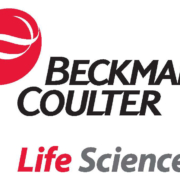Flow cytometric casebook
Flow cytometric immunophenotyping is a rapidly evolving IVD technology which is establishing a place in the routine lab for the assessment of leukemia and certain lymphomas. At the heart of the test is a panel of antibodies that can detect markers or antigens on the cells. However, this depends on the accurate interpretation of complex patterns, determining whether a pattern is consistent (normal) or inconsistent with an expected population. To aid in this complex pattern recognition, Beckman Coulter has developed a unique educational resource, the ClearLLab CaseBook. Users can also download the data to continue their diagnostic practice.
The casebook is based on the ClearLLab 5C reagents which were the first preformulated, IVD antibody cocktails for leukemia and lymphoma immunophenotyping to be granted de novo authorization by the Food and Drug Administration (FDA) for in vitro diagnostic use. ClearLLab reagents simplify and standardize the process removing one of the limitations to flow cytometry gaining its place in the routine lab, and eliminating the need for a lab to manually prepare and design panels, a time- consuming process.
The ClearLLab 5C Casebook provides the clinical history of 16 patients, illustrating the progressive analysis of flow cytometric immunophenotyping data by means of numerous colour-coded illustrated scatter plots. These first assess and then assign the cells before giving a detailed characterization of the aberrant population according to the presence or absence of antigens. It includes patients with characteristic findings typical of various lymphoid and myeloid neoplasms as well as those with clinical and/or laboratory findings suggesting an underlying neoplastic process, but in which no immunophenotypic abnormality is identified. Specimen types include peripheral blood, bone marrow, and lymph nodes. Each case concludes with an assessment of the immunophenotypic findings as well as potential pitfalls.
Flow cytometry has several advantages over immunohistochemistry in cancer detection. This includes its ability to define distinct cell populations by their size and granularity, exclude weakly expressed surface antigens and measure several antigens at the same time with multi-colour analysis.



